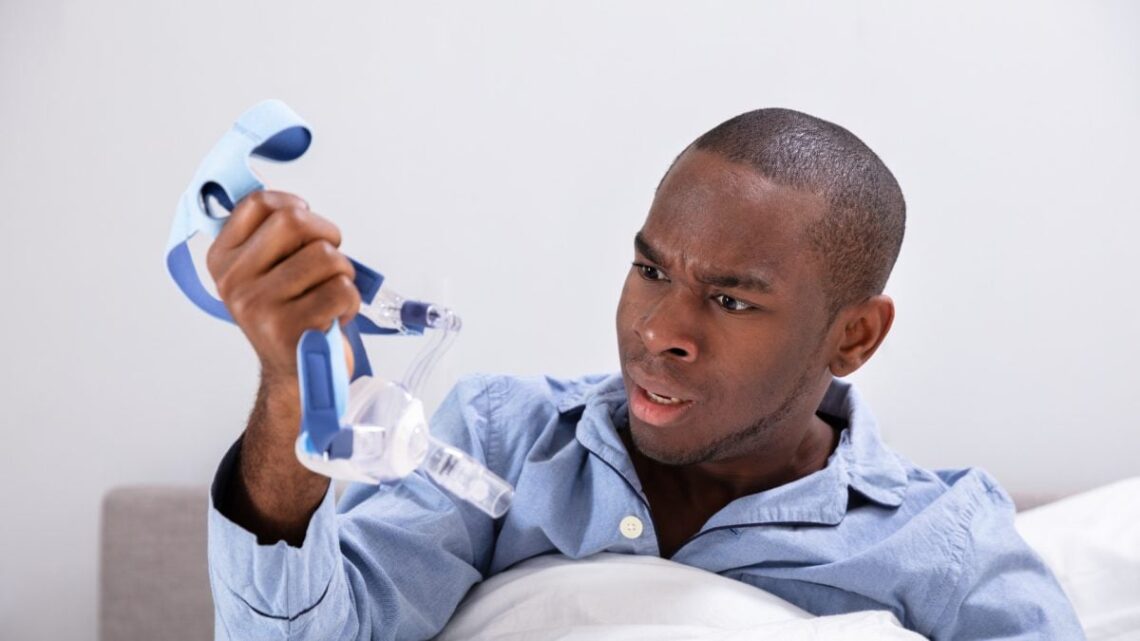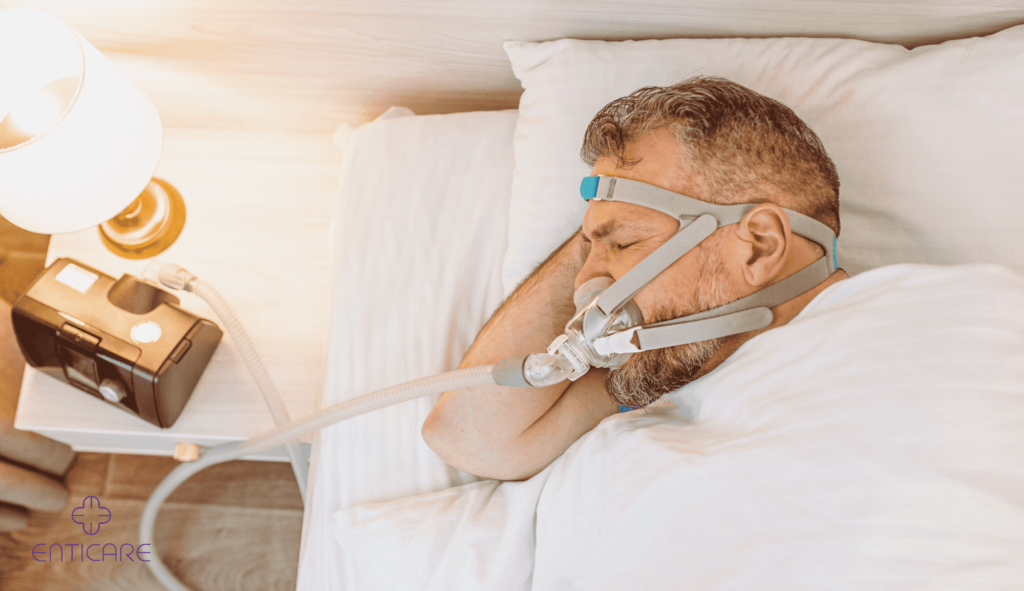
CPAP Mask Leaks: Common Causes and How to Fix Them
Continuous Positive Airway Pressure (CPAP) therapy is an effective treatment for obstructive sleep apnoea. However, one of the most common issues faced by users is mask leaks. These leaks can compromise the effectiveness of the therapy, leading to disrupted sleep and decreased overall health benefits. Understanding the common causes of CPAP mask leaks and how to address them is essential for optimal treatment.
Understanding CPAP Masks
CPAP masks come in various shapes and sizes, designed to accommodate different facial structures and preferences. The most common types include nasal masks, full-face masks, and nasal pillows. Each type has its own advantages and potential for leaks, making it crucial to choose the right one for individual needs. The choice of mask can significantly impact the comfort and efficacy of CPAP therapy, which is essential for those suffering from obstructive sleep apnoea. As such, users should take the time to explore their options and consult with healthcare professionals to find the most suitable mask for their unique circumstances.

The Importance of a Proper Fit
A proper fit is vital for the effectiveness of CPAP therapy. If the mask is too loose, it can cause air to escape, leading to leaks. Conversely, a mask that is too tight can cause discomfort and skin irritation. Therefore, it is essential to find a balance that ensures a snug yet comfortable fit. Regular adjustments may be necessary, especially as one’s weight fluctuates or if the mask material changes over time. Many manufacturers provide fitting guides and allow users to try on different sizes, which can be particularly helpful in achieving that perfect fit.
Common Types of CPAP Masks
1. **Nasal Masks:** These cover the nose and are suitable for those who breathe through their nose during sleep. They are less obtrusive and can be more comfortable for some users. Additionally, nasal masks often come with adjustable straps and cushioning to enhance comfort, making them a popular choice among first-time CPAP users.
2. **Full-Face Masks:** These cover both the nose and mouth, making them ideal for mouth breathers or those who require higher pressure settings. They provide a secure seal that can prevent air leaks, which is particularly beneficial for individuals with nasal congestion or those who may inadvertently breathe through their mouth while sleeping. However, some users may find full-face masks to be bulkier, which can take some getting used to.
3. **Nasal Pillows:** These are small cushions that fit directly into the nostrils. They are lightweight and less invasive, but may not be suitable for everyone. Nasal pillows are often favoured by active sleepers or those who wear glasses, as they allow for greater freedom of movement and a clearer line of sight. Furthermore, their minimal design can make them a more appealing option for those who feel claustrophobic with larger masks. It’s worth noting that while nasal pillows can be a great choice, they may require some adjustment for optimal comfort and seal, particularly for users who are new to CPAP therapy. Find more about claustrophobic on https://www.webmd.com/anxiety-panic/claustrophobia-overview
Common Causes of CPAP Mask Leaks
Identifying the cause of mask leaks is the first step towards resolving the issue. Several factors can contribute to this problem, and understanding them can help users take appropriate action.
Improper Fit
One of the most prevalent causes of leaks is an improper fit. Masks that are too large or too small will not create a proper seal, allowing air to escape. Users should regularly check the fit of their mask, as changes in weight or facial structure can affect how well a mask fits over time.
Mask Wear and Tear
Over time, CPAP masks can become worn out due to regular use. The materials can degrade, leading to cracks, tears, or loss of elasticity in the straps. Regularly inspecting the mask for signs of wear and replacing it as necessary is crucial for maintaining an effective seal.
Facial Hair and Skin Conditions
Facial hair can interfere with the seal of a CPAP mask, particularly with full-face and nasal masks. Users with beards or heavy stubble may experience more leaks. Additionally, skin conditions such as acne or dermatitis can affect how well the mask sits on the face. Keeping the face clean and free of oils can help improve the mask’s fit.
How to Fix CPAP Mask Leaks
Once the cause of the leaks has been identified, users can take several steps to resolve the issue. Here are some practical solutions to consider.
Adjusting the Fit
Most CPAP masks come with adjustable straps that allow users to customise the fit. It is advisable to make small adjustments to the straps to find the right level of tightness. A mask should feel secure without causing discomfort or pressure marks on the skin.
Regular Maintenance
Cleaning the mask regularly is essential to ensure a good seal. Dirt, oils, and moisture can build up on the mask, leading to leaks. Users should follow the manufacturer’s instructions for cleaning, typically involving mild soap and warm water. Additionally, replacing components such as cushions and headgear as recommended can help maintain the mask’s integrity.
Consulting with a Professional
If leaks persist despite adjustments and maintenance, it may be beneficial to consult with a sleep specialist or CPAP provider. They can assess the fit and recommend alternative mask options or adjustments to the CPAP settings. Sometimes, a different type of mask may be more suitable for the user’s needs. To read more about maintenance click here.
Choosing the Right Mask for Your Needs
Finding the right CPAP mask is crucial for effective therapy. Users should consider their sleeping habits, comfort preferences, and any specific needs when selecting a mask. Trying different types of masks can help identify the most suitable option.
Trial and Error
Many CPAP providers offer a trial period for different masks, allowing users to test various options before committing to a specific model. This can be an excellent opportunity to find the best fit and comfort level.
Feedback from Other Users
Reading reviews and seeking recommendations from other CPAP users can provide valuable insights into which masks work best for different situations. Online forums and support groups can be excellent resources for sharing experiences and tips.
The Role of Humidification
Using a CPAP machine with a built-in humidifier can enhance comfort and reduce the likelihood of leaks. Humidification helps to keep the airways moist, which can prevent dryness and irritation that may lead to mask adjustments during the night.
Adjusting Humidity Levels
Finding the right humidity level is a personal preference. Some users may require higher humidity settings, while others may find lower settings more comfortable. Experimenting with different levels can help users find the most suitable balance.
Cleaning the Humidifier
Just like the mask, the humidifier also requires regular cleaning to prevent the buildup of bacteria and mould. Following the manufacturer’s guidelines for cleaning and maintenance is essential for ensuring optimal performance.
Conclusion
CPAP mask leaks can be a frustrating issue, but understanding the common causes and solutions can significantly improve the effectiveness of therapy. By ensuring a proper fit, maintaining the mask, and considering personal preferences, users can enhance their sleep quality and overall health. Regular consultations with healthcare professionals can also provide additional support and guidance in managing CPAP therapy effectively.
Ultimately, a proactive approach to addressing mask leaks can lead to a more comfortable and successful CPAP experience. With the right tools and knowledge, users can enjoy the full benefits of their therapy, leading to better sleep and improved quality of life.
Learn about cpap machine at: Best CPAP Machine Features to Look for in 2025


